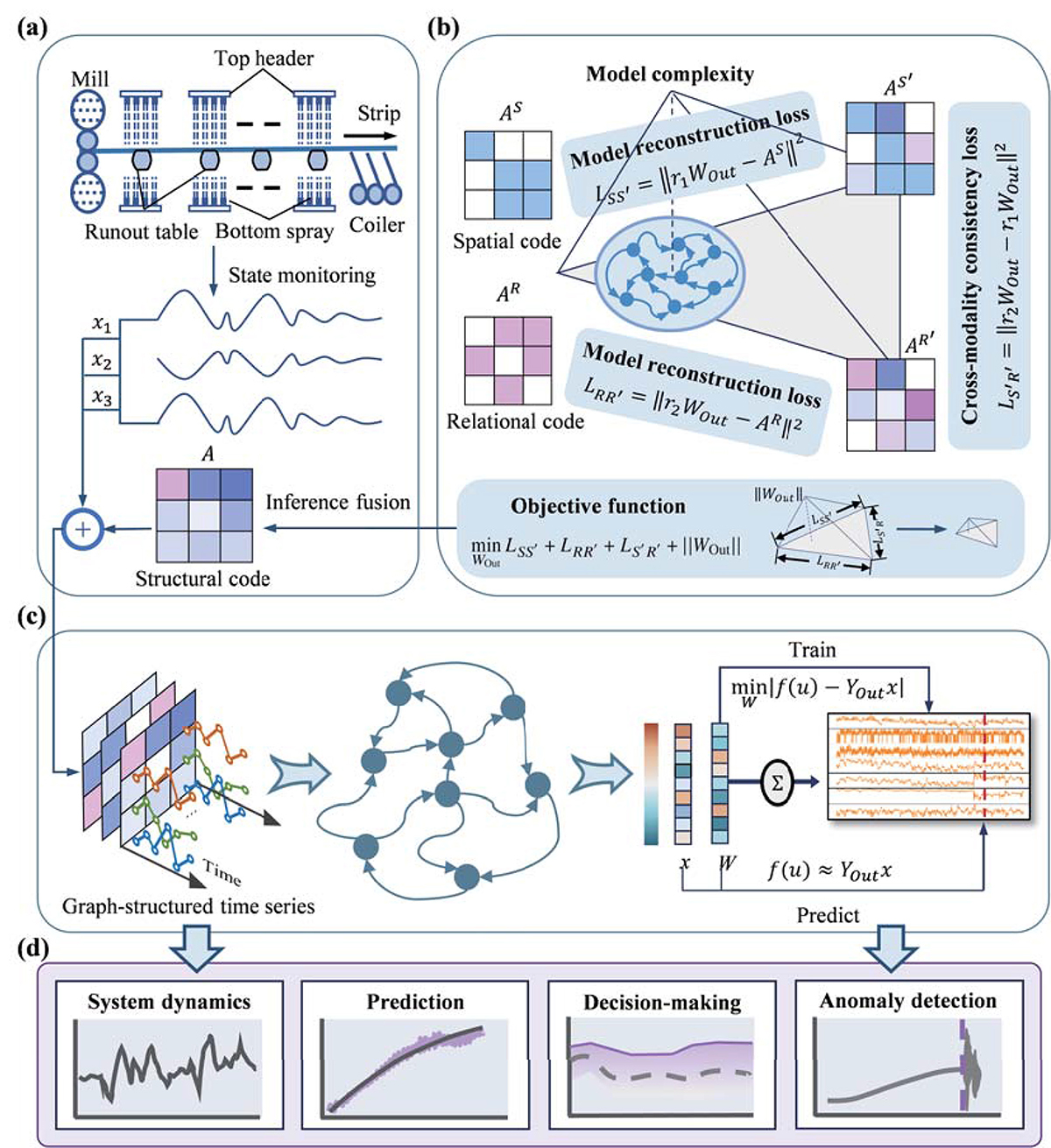Figure 2

Download original image
Schematic overview of the PINL for ICSs. (a) State monitoring for a simplified ICS, illustrated through a laminar cooling process. The steel temperature, the runout table speed, and the water flow rate are continuously monitored. (b) Inference fusion process for structural code generation. Spatial and relational prior knowledge, though potentially incomplete, is directly extracted from the ICS. The inference fusion engine infers more comprehensive structural knowledge by leveraging correlations between different knowledge patterns, balancing three goals: maintaining consistency between inferred spatial and relational knowledge, aligning inferred outputs with available prior knowledge, and avoiding overfitting. The resulting optimally established structural code represents the current environment within the learned structure, enabling generalization across diverse scenarios and providing a scalable foundation for DT construction. (c) Training process for graph-structured time series. The structural code convolves with the reservoir graph to simulate local cortical dynamics, facilitating rich representations of digital cognition. (d) Computational tasks within the digital cognitive loop.
Current usage metrics show cumulative count of Article Views (full-text article views including HTML views, PDF and ePub downloads, according to the available data) and Abstracts Views on Vision4Press platform.
Data correspond to usage on the plateform after 2015. The current usage metrics is available 48-96 hours after online publication and is updated daily on week days.
Initial download of the metrics may take a while.

